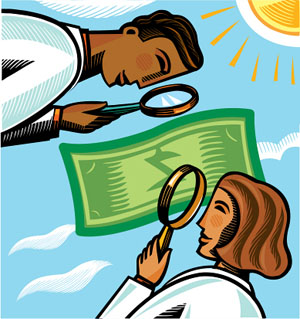Americans continued to seek moderate amounts of medical care in the first quarter, helping insurer UnitedHealth Group beat profit expectations amid signs of continued restraint in health-care spending.
 In an early look at medical-cost trends for 2012, the nation’s biggest private insurer said today that an increase in outpatient treatments from January through March was partly offset by a lack of growth in hospital stays. The Minnetonka, Minn. company is considered a bellwether for healthcare spending, as well as for the managed care sector, as the first major insurer to report quarterly earnings.
In an early look at medical-cost trends for 2012, the nation’s biggest private insurer said today that an increase in outpatient treatments from January through March was partly offset by a lack of growth in hospital stays. The Minnetonka, Minn. company is considered a bellwether for healthcare spending, as well as for the managed care sector, as the first major insurer to report quarterly earnings.
Treatment volume is “tracking right in line with our expectations, which is to say we saw a modest increase in utilization,” Dan Schumacher, UnitedHealth’s chief financial officer, said on a conference call with investors. “Outpatient is the place where we see the most increase, and on the inpatient side we actually continue to see that very restrained. Our hospital bed days are actually flat to down in each of our businesses.”
The insurer’s expected 2012 cost increase for medical treatment, which includes price hikes from doctors and hospitals, as well as changes in how much care members seek, remains at 6 percent, UnitedHealth said.
Growth in the demand for care fell sharply after the economy tanked in 2008, and analysts have wondered when it would pick up as a recovery took hold. UnitedHealth’s results from its 36 million members suggest: Not yet.
Many analysts pointed to the economic slump as an explanation, saying financially pinched families have avoided seeking care. These analysts expected medical visits to pick up as the economy improved. At the same time, however, employers and insurers have aggressively sought to contain costs by making workers pay larger deductibles and nudging them to get high-quality, less-expensive care.
Other factors influencing the 2012 cost trends are continued consolidation among hospitals and doctors, which gives them greater power to raise prices, and the expiration of patents on blockbuster drugs such as Pfizer’s Lipitor, which allows patients and health plans to buy cheaper generics, according to consultants PricewaterhouseCoopers.
In today’s UnitedHealth results, flat or declining hospital stays stood out as a powerful brake on cost increases, said Thomas Carroll, who follows the company’s stock for Stifel Nicolaus, an investment firm.
“What is positive are [UnitedHealth’s] comments around inpatient utilization — that it is still low,” Carroll said. “As you know, inpatient is the biggest piece of the health-care cost pie. The low utilization in inpatient is likely offsetting higher outpatient” trends and price increases by hospitals, he said.
UnitedHealth earned $1.4 billion in the first quarter, a 3 percent increase from results in the same period last year. Revenue was $27.3 billion, much of which includes sales from UnitedHealth’s non-insurance businesses. UnitedHealth’s profit of $1.31 a share exceeded the average estimate of $1.17 per share from Wall Street analysts, as compiled by Bloomberg News.






